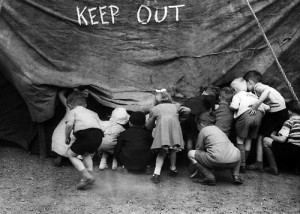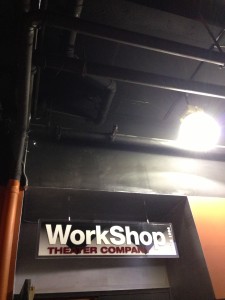Navigate, tease and loop: Three ways to create anticipation when you speak
 Whenever I have a few minutes in the middle of the day to enjoy a cup of coffee, I pull out my stove-top espresso maker. There is something about the slow process of filling the pot with water and freshly-ground coffee beans, setting it on a low burner and listening to the steam bubbles gurgle away. As the steam pressure pushes the water through the ground coffee into the collecting chamber, the enticing coffee aroma fills up the kitchen. The result is a strong brew, and its power is only enhanced by a few minutes of anticipation.
Whenever I have a few minutes in the middle of the day to enjoy a cup of coffee, I pull out my stove-top espresso maker. There is something about the slow process of filling the pot with water and freshly-ground coffee beans, setting it on a low burner and listening to the steam bubbles gurgle away. As the steam pressure pushes the water through the ground coffee into the collecting chamber, the enticing coffee aroma fills up the kitchen. The result is a strong brew, and its power is only enhanced by a few minutes of anticipation.
The brain is all about anticipation and prediction. Rituals make food and drinks taste better by increasing people’s interest and involvement. People get a boost of happiness when they plan their vacations. According to a study, anticipation increased happiness for eight weeks. Shawn Achor writes in “The Happiness Advantage: The Seven Principles of Positive Psychology That Fuel Success and Performance at Work”: “One study found that people who just thought about watching their favorite movie actually raised their endorphin levels by 27 percent.”
Not all anticipation is pleasant, however. Negative anticipation appears to play a big role in memory formation and emotional regulation. For example, the mere anticipation of a fearful situation can increase activity in two memory-forming regions of the brain, the amygdala and hippocampus, – even before the event has occurred. The increased brain activity during anticipation of negative events can make the event more memorable unless people are able to detach from their negative anticipatory emotions. Studies show that resilient brains appear to anticipate negative events by activating their emotional-control centers to control stress and calm down before the event begins.
You can use the power of anticipation as a reward to captivate brains. Be also mindful of the use of negative images as they can trigger negative anticipatory emotions. Here are three ways to add anticipation to your speech or presentation and increase your audience’s engagement.
1. Set the GPS to navigate through your talk. You want to let your audience know where you are leading them and what route you want them to take. What process, recipe, or model do you use to get your audience the results they need? What acronym or theme could you come up with to give your system a captivating and memorable name? Each step in your process will be a hallmark on you journey. Your audience should have a clear sense of where they are and what to anticipate as they navigate to the next point.
2. Tease your audience. Make an exciting promise so that your audience members are compelled to pay attention and can’t wait to hear more. Make them guess by asking an intriguing question and withholding the answer till later. Highlight the benefit of sticking around to hear your solution to their problems. Signal that they will be surprised with what they are about to hear: “You wouldn’t believe it if I told you right now…” or “Just imagine what would happen if…I will tell you what really happened…” Teasers are like juicy bites that make your audience crave more of what you have to offer.
3. Nest a story within a story. The brain always wants to complete a pattern. Once the story is over, it is filed away, and the attention is shifted to the next thing. To sustain your audience’s attention for a longer time and create anticipation, begin a story and then take a detour through another story. Close the second story first and then complete the initial story. You will create nested loops to keep your audience craving for a resolution. Think about mystery novels that gradually unfold the unknown. The only caveat is that you don’t want to make it too confusing and impossible to follow. Don’t overwhelm the working memory with facts, engage emotions instead. Loop but don’t ramble!

